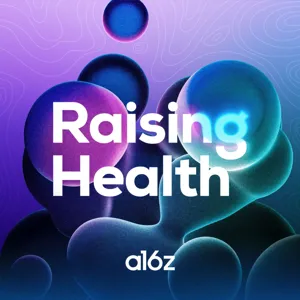Podcast Summary
From academia to leading thousands of scientists at Novartis: Jay Bradner's ability to adapt, innovate, and inspire made him an invaluable asset in the bio and healthcare industry, from engaging academic audiences to co-founding startups and leading Novartis' research division.
Remarkable journey and adaptability of Jay Bradner, the President of the Novartis Institute for Biomedical Research (NIBR). Jorge Conde, a general partner at 16z, shared an anecdote from their first encounter, where Jay's ability to turn a dry academic presentation into an entertaining roast left a lasting impression. This talent for engaging audiences extended beyond academia, as Jay went on to co-found five biotech startups. However, the call to join Novartis and lead NIBR was unexpected. There was no phone call or formal invitation; instead, Jay felt a strong pull towards the opportunity to lead thousands of scientists in discovering life-changing medicines for patients. This anecdote illustrates Jay's unique ability to adapt, innovate, and inspire, making him an invaluable asset in the ever-evolving world of bio and healthcare.
Collaboration and innovation in science: Interactions with industry and academic leaders can lead to impactful research and the development of new therapeutics
Collaboration and innovation can lead to exciting discoveries and opportunities in science. The speaker shared an amusing story about creating fake email pop-ups in Adobe Photoshop during a presentation, but the underlying theme was the importance of being in a stimulating environment where ideas can be explored and brought to life. The speaker was thriving as a scientist at Dana Farber Cancer Institute and Harvard Medical School, but the opportunity to work with Charles Sawyer and Novartis led to the founding of Syros, a company focused on gene control and dissecting the temporal spatial opportunities in biology. This experience showcases how interactions with industry and academic leaders can lead to impactful research and the development of new therapeutics.
Joining NIBR for scholarly culture and drug hunters: Scientist left his research position to join NIBR for its ambitious culture and opportunity to work with renowned drug hunters, but misses patient interaction.
The speaker, a scientist, made a career decision to join NIBR as the head of research due to his admiration for the company's scholarly and ambitious culture and the potential to work with renowned drug hunters. He was inspired by the impact of some of their molecules reaching human clinical investigation and recalibrated his expectations for the type of science he wanted to do. However, he misses seeing patients and being involved in their treatment, which was a moving human experience for him during his time as a researcher. Despite this, his role at NIBR now focuses on therapeutic science innovation and clinical translation, making it inappropriate for him to be a doctor and attend to patients.
From lab to clinic: The role of academic institutions: Academic institutions lack the resources and expertise to take small molecules from discovery to clinical trials, making it a better fit for professional research environments like biotechs.
Academic institutions often lack the comprehensive resources and expertise to take a small molecule from discovery to clinical trial. Jay, a drug hunter at Novartis, explained that while there are collaborative networks and degree-granting programs in allied fields, it's a rare institution that can handle the entire process from proof of concept to regulatory document and GMP manufacturing. This responsibility and financial commitment are better suited for professional research environments like biotechs. Despite initial misconceptions, esteemed chemistry departments, like Harvard's, are embracing the translational impulse and are seeing their molecules through via biotechs. The intellectual and project resource allocation is more thoroughly considered in the private sector, making it a better fit for the small molecule drug discovery process.
Biotech and Academia Collaborate for Idea Transition: Biotech companies and academia work closely, with biotech's focus and resources driving idea transition, and academia's advancements smoothing collaborations.
Biotech companies and academic medical centers have been working more closely together to facilitate technology transition and clinical translation. The extreme focus, resource mobilization, and singularity of mindset in project-focused biotech companies make them powerful catalysts for bringing new ideas to patients. Academia has also made significant strides in collaborating with industry, leading to smoother handoffs and productive relationships. The ecosystem for ideas, technologies, and individuals is now more fluid than ever before. For professors considering starting a company, the transition may not be as drastic as perceived, with similar concepts, assays, instrumentation, and even language being used. It's essential to recognize that biotech offers a new adventure with potentially greater rewards, as academic professors today often earn more in the industry.
Transitioning from academia to industry: Fully commit to your field, learn from professional environments, and approach industry collaborations as equal partners.
Transitioning from academia to industry can be a valuable and enriching experience, even if it doesn't involve quitting your current job. Vijay's journey from academia to postdoc to industry demonstrates this. He emphasizes the importance of committing fully to your chosen field and learning from professional environments. Even seemingly unrelated experiences, like attending biotech company meetings, can provide valuable preparation for future roles. Universities and organizations are also recognizing the importance of bridging the gap between academia and industry, as seen in programs like Spark at Stanford. As for collaborating with larger biotech or pharmaceutical companies, it's essential to approach these partnerships as equal collaborators, understanding that both parties bring unique strengths and weaknesses to the table. The success or failure of these collaborations can significantly impact the reputation of both parties.
Novartis' Autonomous Project Teams and Innovative Approaches in Therapeutics: Novartis' autonomous project teams, led by project team leads, can initiate and terminate projects easily due to their matrix organization. Exciting innovations in therapeutics include molecular glues, offering unprecedented modes of inhibition, and targeted protein degradation, representing a first-ever inhibitor of a phosphatase.
At Novartis, project teams function like autonomous units with the ability to recruit resources and execute projects effectively, much like Siro's. These teams, led by project team leads (PTLs), have the power to initiate and terminate projects with ease due to their matrix organization. However, finding these teams and their leaders can be challenging as they may not be as visible as other executives. Novartis prioritizes partnerships based on the champions within the organization leading the science, as these individuals have the power to drive projects through despite obstacles. Regarding the current state of innovation in therapeutics, the speaker expresses excitement about molecular glues and targeted protein degradation. Molecular glues, which have roots in cyclosporin and immunophilins, offer unprecedented modes of inhibition and represent a first-ever inhibitor of a phosphatase. This innovative approach holds significant promise for therapeutic breakthroughs.
New drug discovery approach targets proteins in post-translational modified states: Molecular glues provide a new drug discovery approach by targeting proteins in their modified states, leading to neomorphic functions, and are particularly effective in small molecule and cell/gene therapy spaces. Genome engineering and xenotransplantation are also areas of focus in the industry.
Molecular glues offer a new perspective in drug discovery by targeting proteins in their post-translational modified states, leading to neomorphic functions. This approach, which can short-circuit disease pathways, is particularly exciting in the small molecule space, where molecular glues can function bivalently. Meanwhile, in the cell and gene therapy space, there's a growing interest in exploring the potential of chimeric transcription factors and other protein biomolecules to short-circuit disease biology. Additionally, genome engineering is an exciting area, with the potential to engineer pigs for xenotransplantation, and the industry is focused on making strategic choices to innovate in this space. Throughout it all, drug hunters continue to play a crucial role in driving innovation and discovery.
The Art of Drug Discovery: Balancing Art and Science: The artisanal approach to drug discovery, which involves deep understanding of molecular recognition and disease processes, remains crucial despite technological advancements. However, as generative chemistry advances, some aspects may become more systematic.
The process of discovering and developing new drugs is an artisanal craft that requires a deep understanding of molecular recognition, disease processes, and rigorous optimization. Despite the advancements in technology, the importance of this artisanal approach cannot be overstated, as it is the key to bringing new medicines to patients. However, as technology continues to advance, particularly in the field of generative chemistry, some aspects of drug discovery may become more systematic and less reliant on the artisanal approach. Yet, the physical exemplification of the molecule and its assessment as a probe, selective perturbation of biology, and ultimately as a therapeutic will always require a level of artisanal expertise. This balance between art and science will continue to drive the field of drug discovery and development.
Highlighting our species' fragility and the need for better preparation: The pandemic has accelerated trends towards flexible work and remote collaboration, but it also raises concerns about the potential threats to innovation and workforce well-being.
The pandemic has highlighted our species' fragility and the need for better preparation and adaptability. With the vast increase in small molecules and advanced technologies, the scientific community, including NIBR, has shown remarkable resilience and innovation. However, the shift to remote work and distributed trials presents new challenges, such as engagement and productivity, especially for new scientists and leaders. The pandemic has accelerated trends towards flexible work and remote collaboration, but it also raises concerns about the potential threats to innovation and the well-being of the workforce. Overall, the pandemic has underscored the importance of adaptability, resilience, and collaboration in the face of unexpected challenges.
The power of patient interaction and lab work in research: Patient interactions and lab work fuel researchers' sense of purpose and motivation. Witnessing patients' resilience and industry innovation reminds researchers of the importance of their work.
Interacting with patients and being in a lab environment fuels a sense of purpose and motivation for researchers, especially during challenging times like a pandemic. Witnessing the resilience of patients, such as those facing leukemia diagnoses, provides a powerful reminder of the importance of scientific research. Furthermore, being part of an industry that has creatively responded to the pandemic and addresses various diseases is inspiring and transformative. The energy derived from these experiences is akin to the first moments of molecular recognition or patient responses in clinical studies. Overall, the combination of patient interaction, lab work, and industry innovation keeps researchers motivated and dedicated to making a difference in people's lives.





